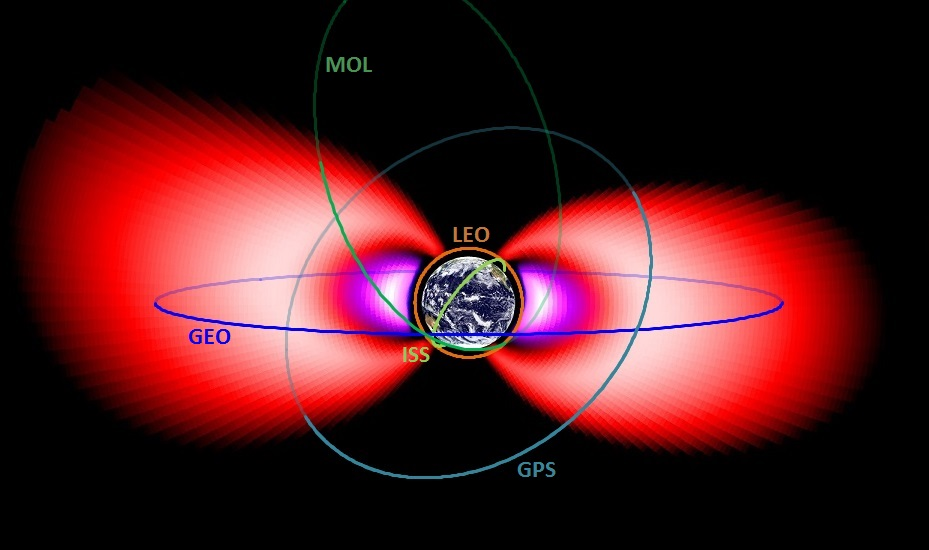Description
Modelling of the Radiation Environment Near-Earth
The International Radiation Environment Near Earth Model (IRENE), formerly AE9/AP9/SPM, has provided the global satellite design community with enhanced specification capabilities over legacy models since 2012. Based on feedback from the community we have continued to improve and expand capabilities of the model suite. We have recently released updates to version 1.5 providing more features...
A large proton belt enhancement occurred on 24 March 1991 following an interplanetary shock that impacted the dayside magnetopause at ~03:40 UT. Its formation was measured by the proton telescope aboard CRRES and attributed to the injection and inward transport of solar energetic particles (SEPs) by an azimuthally propagating electric field pulse induced by the shock’s compression of the...
We develop a radiation belt model by using probabilistic transport table that are calculated from test-particle simulations (GEMSIS-RBW). The parameters for the tables are L, background density constant along the field line, and chorus wave amplitude. The magnetic field is assumed to be the earth's dipole field. The two dimensional probabilistic table consists of the electron energy from 100...
The European Union’s Horizon 2020 Prediction of Adverse effects of Geomagnetic storms and Energetic Radiation (PAGER) project was successfully concluded in 2023. This project provides real-time space weather forecasts initiated from solar observations as well as predictions of radiation in space and its effects on satellite infrastructure. Real-time predictions of particle radiation and cold...
The latest extension of the Solar Accumulated and Peak Proton and Heavy Ion Radiation Environment (SAPPHIRE) modelling suite is presented.
SAPPHIRE-2S is a probabilistic model for mission specification concerning Solar Energetic Particle (SEP) particle radiation.
It is based on the data of the latest version of the SEPEM Reference Dataset with the addition of newly curated data from the ACE,...
We investigate two significant challenges in climatological modeling: improving up on the local distributions at grid points in the models and modeling the spatio-temporal covariance structure. We propose the use of tabular local distributions, with extrapolation based on generalized gamma functions, with power-law transforms to represent the error distributions. The generalized gamma can...

